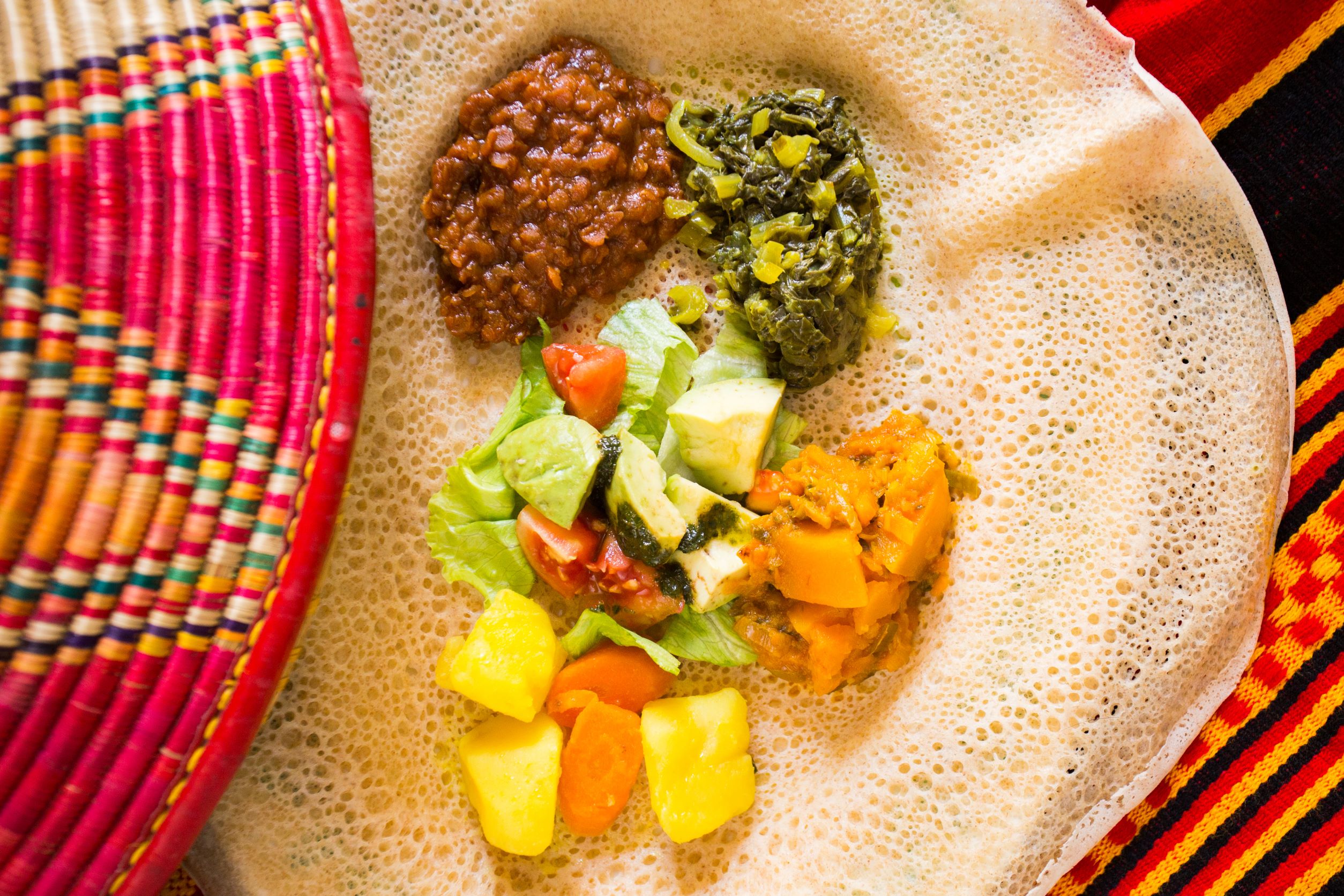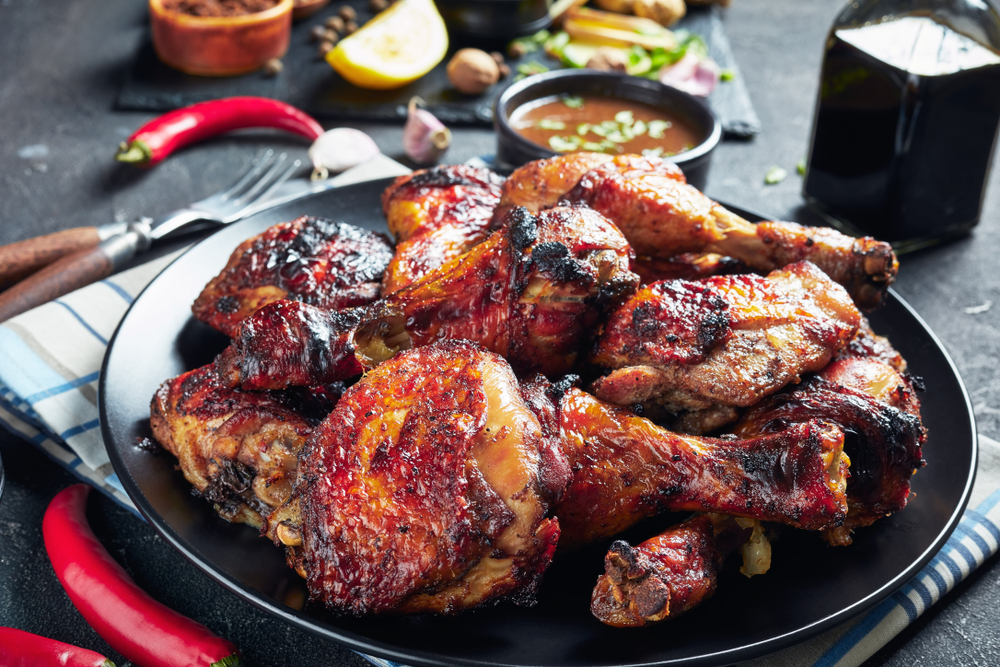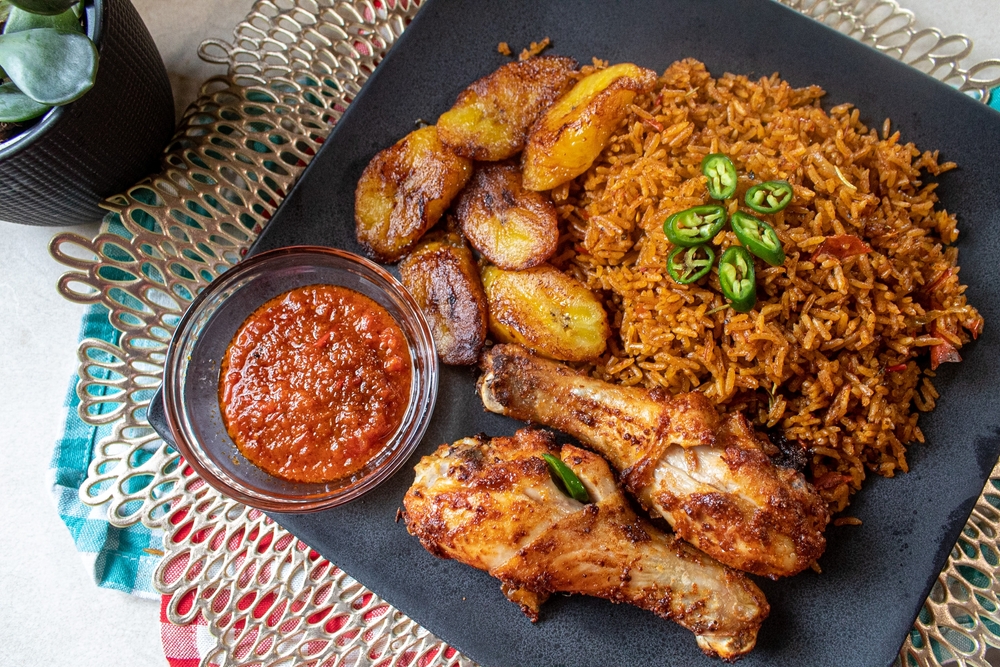Free digital copy
Get Speciality Food magazine delivered to your inbox FREE
Get your free copy
Fine food and drink industry players will no doubt remember the explosion of interest in global flavours that arose during the pandemic, as travel-restricted consumers were keen to taste the flavours of the world through more adventurous home cooking.
But now, a longer-term picture has emerged, says George Phillips, commercial director of Wanis International Foods. “Not so long ago there was something known as ‘ethnic food’ – loosely defined as ‘non-British’, so encompassing Southeast Asian (Indian), West African, Caribbean and others,” Geoge says. “This is vanishing, and the more multicultural we become, the more once-exotic flavours become less unfamiliar and less ‘scary’.”
Recent years have seen an acceptance of and interest in these cuisines in mainstream British culture, driven by influence from immigrants. “Food is one of the great levellers – you are what you eat, and nothing (or almost) brings people and communities, irrespective of creed, race or religion, together better,” George says.
Independent retailers, as trusted traders of authentic ingredients, are well-placed to accommodate these cuisines and the growing desire for hard-to-find spices or ingredients. When it comes to ‘world food’, speciality food retailers can find success in establishing their niche – especially if their customers have an interest in a particular cuisine – or by carrying a wider range of products that cater to multiple global cuisines.
“With many products crossing boundaries consumer-wise, it is possible to carry a world food range without needing a shop the size of the Albert Hall,” George says. “We would recommend focussing on the core categories, such as beans and pulses, flours, sauces/condiments and seasonings – not forgetting drinks either.”
For details on what to stock, discover the trending world cuisines in Britain below.
Interest in Filipino food has been growing in the UK for years. Known for its layers of flavours that balance sour, salty and sweet, it has several iconic ingredients that are becoming increasingly loved in Britain, like kalamansi (or Philippine lime), ube (or purple yam) and fruit vinegars made from coconut, sugarcane, coconut sap, nipa palm tree sap and other fruits.
Exposure on TV and social media has helped shine a light on Filipino food in the UK, says Roni Bandong-McSorley of RoniB’s Kitchen. “There are more and more producers and restaurateurs who are championing Filipino food and flavours throughout the UK.”
And crucially, this cuisine – which is an exciting mix of indigenous, Malay, Chinese, Japanese, Spanish, South American, American and Arabic flavours – passes the taste test. “Based on my experience, once our food is tasted, people like it,” Roni says. “Now that people are discovering Filipino cuisine and flavours, I do expect interest will increase and demand will rise together with this interest.”
The most popular Filipino dishes are adobo, which Roni says takes on many forms using different types of proteins and cooking methods. “The combination of ingredients used varies by region and by family recipes,” she says, but essentially, the cooking process involves browning the protein in oil and then marinating and simmering it in vinegar, salt and garlic.
Other popular Filipino dishes include:
• Sinigang – A sour soup with vegetables and a variety of protein, such as meat, fish, seafood or just vegetables.
• Sisig – A pork dish made from pork face, which was dubbed as one of the ‘dishes that define the Philippines’ by chef Anthony Bourdain in his TV show Parts Unknown.
• Lechon – A whole roasted pig.
• Lumpiang Shanghai – Pork- or sometimes shrimp-filled crispy spring rolls.
Retailers who want to explore more Filipino cuisine in their shops can highlight the vinegars and sauces that are popular in the flavours of the Philippines. “Filipinos are masters in cooking with vinegar,” Roni says. Other go-to products include adobo sauce, banana ketchup, Ihaw Ihaw barbecue sauce and garlic chilli oil.
At world ingredients seller Sous Chef, Holly Thomson says purple yam spread is a key product in their range. “Use it in baking and desserts or serve it as a jam on toast! The striking violet colour is instantly recognisable.” It can also be used to make a vibrant ice cream, or served in halo halo, a classic shaved ice dish.
Roni’s brand has also created British-style products with a Filipino twist to capture the imagination of those who have little experience tasting Filipino food, including Kalamansi Marmalade and Tamarind Jam.
But because the food of the Philippines has a lot of Chinese influence, you may already stock other Filipino staples, such as oyster sauce, hoisin sauce and black bean chilli oil or paste.

After being named one of the top trending flavours in 2021, consumer interest in food from Ethiopia and Eritrea has only grown. One reason behind the growing demand is the cuisine’s alignment with plant-based and free-from diets. “Vegetarian and vegan dishes are abundant, largely because of Ethiopia’s tradition of fasting from animal products for religious reasons,” explains Bezuwork Berhanu of Beza Ethiopian Food, a London-based restaurant specialising in Ethiopian food.
“Ethiopian cuisine is rich, diverse, and vibrant, characterised by its unique blend of spices and bold flavours,” Beza says. Central to the country’s cuisine is injera, which Beza describes as “a spongy flatbread made from teff flour, which is gluten-free and vegan. Injera is used both as a base for dishes and as a utensil to scoop up food.”
Popular Ethiopian vegan dishes include:
• Misir wot – A spicy red lentil stew made with berbere, a blend of chili peppers, garlic, ginger, basil and other spices.
• Shiro – A thick, creamy chickpea flour-based stew flavoured with garlic and ginger.
• Gomen – Sautéed collard greens or kale.
• Fasolia – Green beans and carrots sautéed with onions and tomatoes.
Ethiopian food is gaining momentum in the UK because of its ability to tie in with health and dietary trends, Beza says. “As more people embrace vegan and gluten-free diets, Ethiopian cuisine, with its naturally vegan dishes like misir wot and gluten-free injera, fits perfectly into these dietary preferences.”
The food of Ethiopia also offers “distinctive and complex” flavours, with spices like berbere and mitmita appealing to those who are looking for new and exciting taste experiences. “There’s a growing interest in diverse, global cuisines among UK food enthusiasts, and Ethiopian food offers a unique culinary adventure,” Beza says. The cuisine also stands out in the UK because of the “communal way it is eaten, with shared platters that encourage a social dining experience”.
Looking to make the most of this vibrant cuisine in your shop? Beza recommends stocking teff flour as your starting point. As the base for injera, it’s essential for making the country’s staple bread.
Holly suggests stocking a berbere spice blend to help customers create fragrant Ethiopian and Eritrean dishes. “It adds a warm, earthy heat to curries and slow-cooked stews. In Ethiopia, berbere recipes are handed down from generation to generation. Most families will have their own special blend. It’s used in marinades and in traditional dishes like misir wot, a richly spiced lentil stew.”

Last year, Windrush Day, a day of remembrance marked from 22nd June 1948 when the HMT Empire Windrush arrived in the UK, marked 75 years of Caribbean immigration to the UK. Over the many decades, Caribbean food and culture has had a significant influence on mainstream British cuisine.
The Jamaican stalwart, jerk, is no longer a niche flavour in the UK, says George. “Tesco meal deals include Jerk Chicken Sandwiches, McDonalds launched Jerk Chicken Burger (not met with universal approval at the time, but a sign of the times), jerk seasoning is now part of many retailers’ spice racks and meal kit ranges, and you can buy jerk peanuts from the likes of KP. Not forgetting Levi Roots and Dragon’s Den,” he continues.
“This is now rapidly becoming a familiar flavour to a much broader cross-section of consumers,” George says, though he adds that consumers still need to try the genuine article – and indeed, authentic flavours are driving the appeal of Caribbean cuisine.
“Consumers are increasingly wanting to enjoy authentic experiences of food and drink from around the world, giving an insight into different cultures,” says David Mills, founder of Wha Gwan Drinks, which makes Caribbean-inspired drinks.
Traditional Caribbean meals consist of locally grown produce, David says. “In Jamaica, the traditional breakfast is akee, which is a fruit that tastes like scrambled eggs when cooked. It’s seasoned lightly with peppers, onions and mixed herbs. This is served with salt fish and hard food, which consists of green bananas which are boiled, bread fruit which is roasted, yams which are boiled and boiled dumplings. Callaloo is also a traditional green, similar to spinach, and this can be integrated into the akee and sailfish.”
Dinners, meanwhile, usually consist of rice and peas or white rice, sometimes with hard food, David says. “The traditional meals would be curried chicken on the bone or curry goat, or jerk chicken, however this is something usually purchased from a street trader. Many Carribean people are vegetarians, so the meals above would be adapted to no longer contain the fish or meat.”
The most popular drinks, meanwhile, are rum, beers like Red Stripe, and rum cream, which is drunk all year round in the Caribbean.
What’s next for Caribbean cuisine? “As the generations pass, some of the more traditional dishes (for example Jamaican ackee and salt fish – delicious!) may be consumed less often, but this is more than offset by the ever-widening acceptance and accessibility of cuisines once considered niche among more ‘mainstream’ consumers,” George says. “This phenomenon shows no sign of abating, and the market for world food continues to be one of the most dynamic in the UK.”

From Nigeria and Ghana to Morocco and Algeria, the cuisine of West Africa has been in the spotlight over the past few years. In fact, George says sales of these products are more than 30% up on the previous year, which was itself substantially up from the year before. “Partly because there is a significant, and increasing, diaspora from the region (mainly from Nigeria, but also from Ghana) and partly, and in many ways more significantly, down to our expanding food repertoire,” George says.
The interest in West African cuisine has also been driven by brands making their signature flavours much more accessible. “Nothing beats home cooked, with all the ingredients, herbs and spices added to a traditional recipe, but it has never been easier to bring authentic flavours into the kitchen,” George says. For instance, Tropical Sun, which is one of Wanis’ International’s brands, offers jollof microwaveable rice, cooking sauce and seasoning, ensuring busy Brits can incorporate these flavours of the world into almost any meal.
Racheal Motojesi, founder of Racheal Cooks and an expert in afro-fusion flavours, agrees the growing Nigerian diaspora is creating demand for authentic cuisine in the UK that connects them to their roots – but there is also rising mainstream interest in exploring global flavours, “with adventurous consumers seeking out new culinary experiences like Nigerian dishes”.
And, as with other world flavours that are thriving in the UK, such as Ethiopian and Mexican cuisine, “Part of the beauty of the majority of these flavours, be they sauces, marinades, rubs or seasonings, is that vegetarians and vegans do not draw the short straw,” George says. Racheal agrees that the emphasis on plant-based and gluten-free diets aligns well with Nigerian cooking specifically.
The flexibility of many of the store cupboard staples used in these cuisines is also an appeal, George says. “Rice of course is universal, though here too there are many variations (the world does not end with basmati!), but products such as cornmeal, gari (grated cassava traditionally eaten in Nigeria and Ghana), semolina and fufu (potato starch) all have uses in recipes outside of their traditional base,” he says.
Racheal says the rich, vibrant flavours of Nigerian cuisine, which are influenced by the country’s diverse ethnic groups and history (a fusion of African, European and Middle Eastern influences), “showcase creative uses of staple ingredients like cassava, yams, plantains, and palm oil, highlighted by bold spice blends”. Flavours like curry powder, thyme, ginger, chilli peppers, curry leaves and efo rule the cuisine.
Popular Nigerian dishes include:
• Jollof rice – A tomato-based rice.
• Egusi soup – A thick stew made with ground melon seeds.
• Suya – Spicy grilled meat skewers.
• Pounded yam – A dough made from boiled yams, similar to mashed potato and eaten with soups and stews.
Looking to join the West African flavour revolution? According to George, jollof is the place to start. “Jollof is the new jerk! Jollof is as much a cultural icon to Nigerians and Ghanaians as jerk is to Jamaicans,” he says. He expects jollof, like jerk before it, to become increasingly popular.
Racheal recommends stocking staple ingredients like cassava flour, yams, plantains, palm oil and egusi seeds; spices like curry powder, thyme, ginger, chili peppers and curry leaves; and canned items like tomato paste and puree.
“Pre-made seasoning mixes, stew bases, or sauces also allow easy experimentation with Nigerian flavours at home,” she adds. And there’s more retailers can do if they want to promote these flavours. “Providing recipes, hosting demos, or partnering with local Nigerian chefs and bloggers can further educate customers,” she says.
We’ve seen the potential world cuisines have to dominate British tastes, from the more established flavours of the Caribbean to the quickly spreading cuisine of Nigeria. But what might be around the corner?
“Almost everything is here if you know where to look – world food is a fertile breeding ground for entrepreneurs,” George says. His picks for what will rise to the top next? Korean cuisine, East and North African food and Latin American flavours are ones to watch.